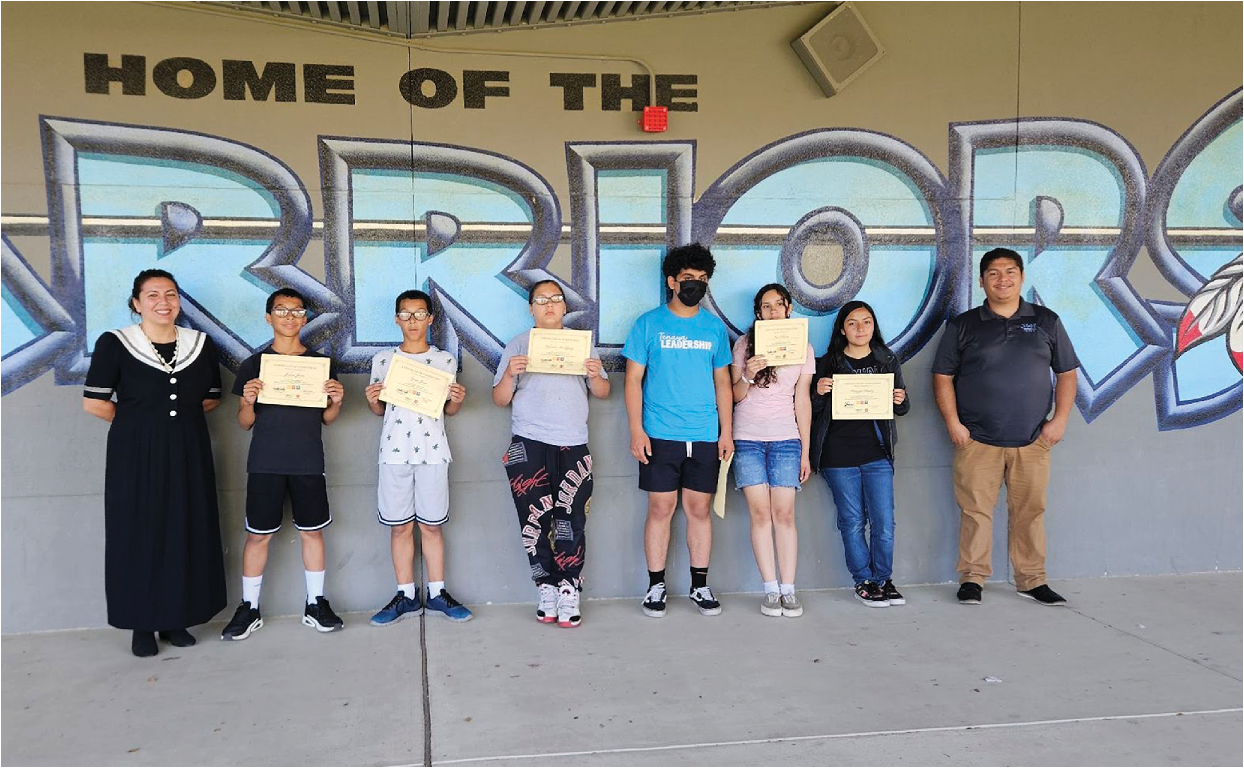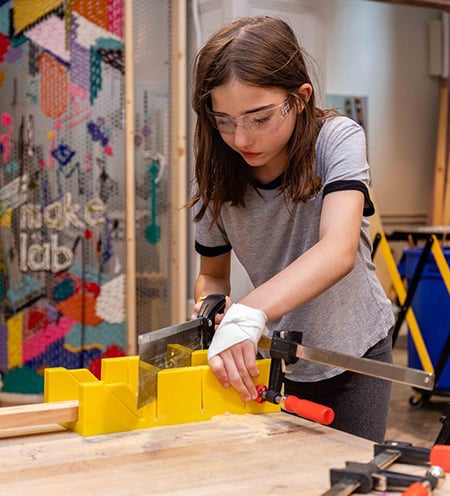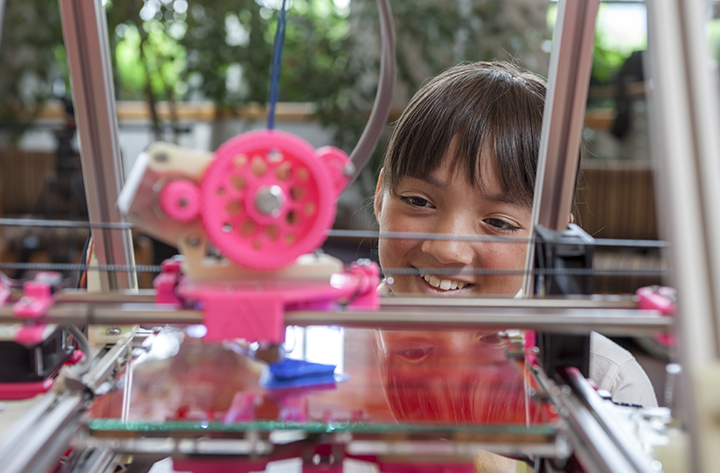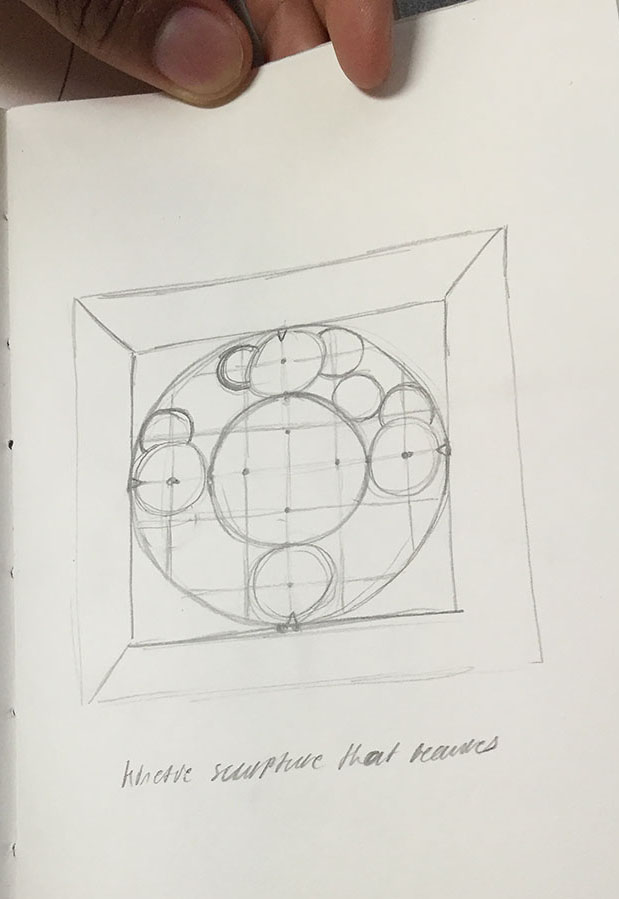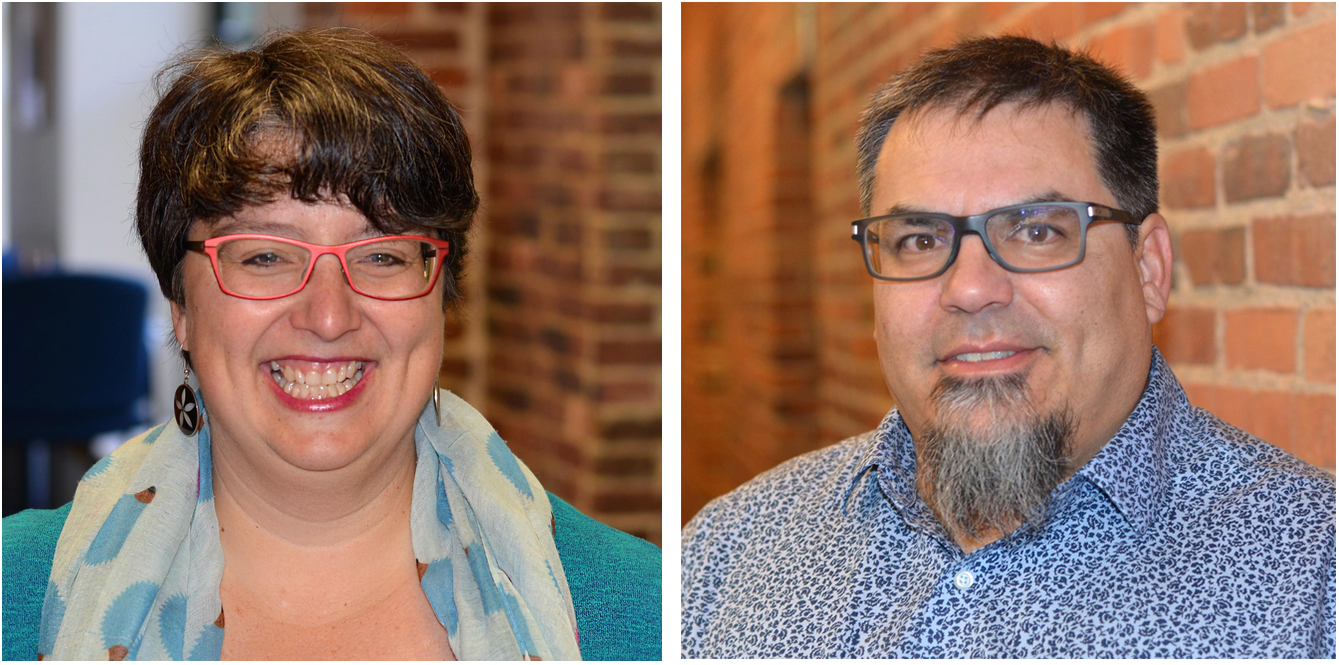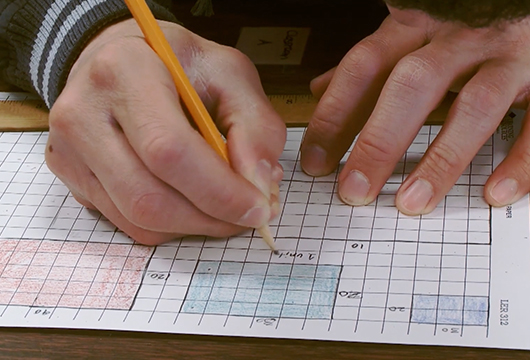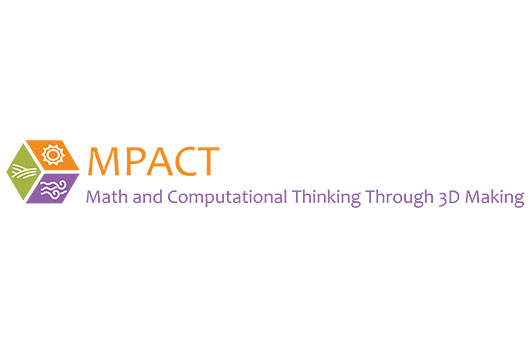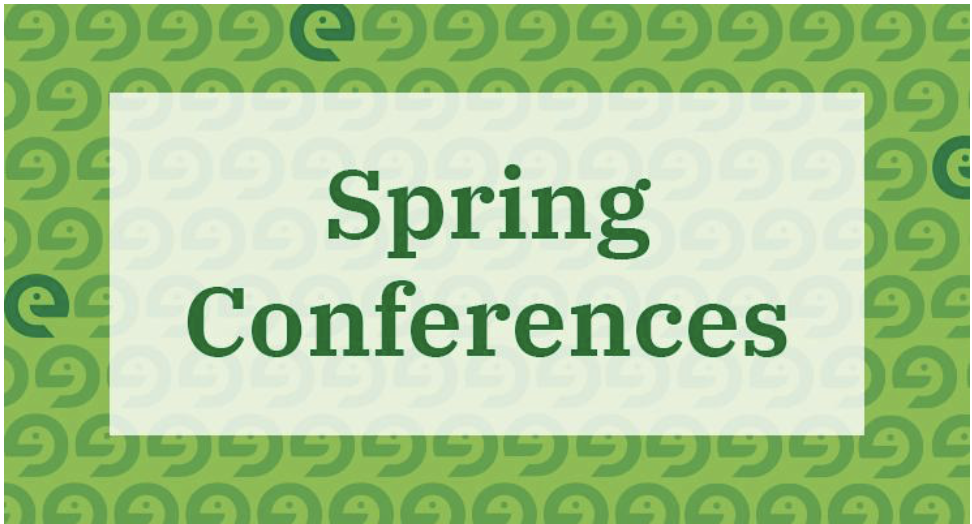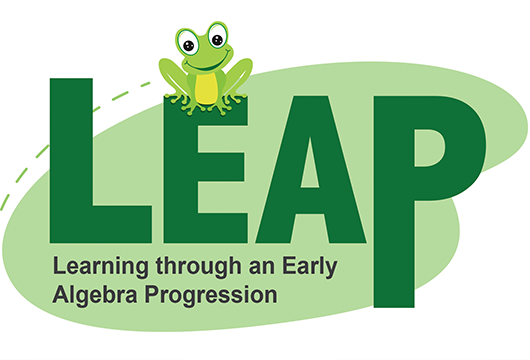TERC Blog
Math and Making for Middle School Youth
In an afterschool program in a small city in California, Carlos*, a Mexican-American middle schooler, uses scissors to cut out two congruent pieces of felt to make a Mexican flag plushie to represent his family’s heritage.

*All names of people and schools are pseudonyms.
As he showcases his final plushie that includes LED lights (Figure 1), Carlos tells us how important measurement has been to his process. Carlos is one of over 200 hundred middle school children across California participating in AMPED 4 Making, an NSF-funded project (NSF-2215382) co-designed by TERC and the Cesar Chavez Foundation (CCF) Education Fund.

 In AMPED 4 Making, middle school youth engage in design- and-making projects that address community goals aiming for changes in their relationship with mathematics. In each project, youth use mathematics to design, prototype, or build meaningful and useful artifacts. AMPED 4 Making relies on the life and values of Cesar Chavez as a touchstone for Latinx youth’s positive identity.
In AMPED 4 Making, middle school youth engage in design- and-making projects that address community goals aiming for changes in their relationship with mathematics. In each project, youth use mathematics to design, prototype, or build meaningful and useful artifacts. AMPED 4 Making relies on the life and values of Cesar Chavez as a touchstone for Latinx youth’s positive identity.

Research Methods and Object Elicitation
Part of AMPED 4 Making’s goals is to understand how the activities developed by middle school youth work when facilitators and youth use them. The research includes a youth survey, a math learning assessment, interviews with facilitators, and object elicitation interviews with the youth. Object elicitation (Levin-Güracar et al., 2024) is a data collection method that centers the youth participating in the program in an interview around an object that they made in AMPED 4 Making. Since the objects were created by the participants, the objects embody their knowledge, skills, and attitudes and make interviews easier by shifting the focus of attention from the interviewer-interviewee to the object. This type of interview elicits richer information than regular interviews because images and objects facilitate recalling processes and memories in more detail (Harper, 2002).

This longitudinal single-case study (Yin, 2003) looks at the changes experienced by Carlos over the course of his participation in AMPED 4 Making in 2023–2024. We detail the changes in how Carlos expressed his ideas and learning in three areas: measuring and other math, careers, and problem solving through two end-of-semester object elicitation interviews (November 2023 & May 2024). In the first interview, Carlos showcased a car figurine he made on Tinkercad (Figure 2).
Later, in the second interview, Carlos showcased multiple projects, including an unfinished flag plushie (Figure 1).
Math: Importance of Measuring
Carlos demonstrated a growing sophistication in the way he discussed the math embedded in the making projects. When discussing the car figurine in the first interview, he talked about sizes but did not identify lengthening and shortening as being related to math or measurement:
“An object will depend on size. And when you vision objects, not in math, but the object when you sculpt or make it … you will have to try to shorten the length of the main and give more space to the thing that you desire most and want to add.”
Though he explained that shortening one of the dimensions would provide more space in Tinkercad to other dimensions of the figurine, he did not consider it to be math. By the second interview, he clearly articulated the need for precision in measurement in order to accomplish the desired result:
“Well, one of the very first things I learned actually was about measurements, and how it’s very important to have these to be precise to get things the way you want.”

Between the two interviews, Carlos had many opportunities in the program to practice with measurement (Figure 3) and experience what happens when measurements are not accurate, and he was able to express the importance of precision.
Future/Careers: Skills Learned and Career Paths
One of the goals of the program is to expose students to skills that they could use in their future careers. Carlos demonstrated interest in career paths that he hadn’t considered before. Through the program, he explored ways to use his newly-learned skills in math and making. When asked in his second interview about how the skills he learned in the program might be useful for a job, Carlos noted three different careers that he could potentially pursue with his new learning:
“One of them would be a professor, for example, in mathematics, which obviously is very good, because they taught us those skills, and also a coder, for example, with software, which they also taught, or hardware. The clay or a potterist [sic] is really helpful to learn about these skills. … I have some ideas about jobs, but I never got the actual experience like that this [program] gave me.”
Along with the three careers, he mentioned important skills he learned such as teamwork, cooperation, and a willingness to do what may be necessary for a task, volunteering that these would be valuable in future work:
“In terms of teamwork, and cooperation, I felt like that was really good for us. Because it’s a very important skill that you need when you get a job. And also, in terms of other skills, it’s very important to get hands on work to not be afraid to get dirty or be afraid of really anything, and it really helped us gain confidence.”
The three specific careers that Carlos expressed interest in are all aligned with skills learned through AMPD 4 Making. He has made a valuable connection between identifying career skills and his future.
Problem Solving
Carlos showed that he developed skills such as troubleshooting in his work with the various projects he did in the program. In the first interview, he had a hard time explaining the difficulties that he ran into when making a car model on Tinkercad:
“Well, the bumper wasn’t exactly how I imagined it, I guess, but I did—I was able to, how do you say it—I was able to successfully. I was able to successfully take the—I kind of imagined the bumper as this and then the final part of above.”
In his halting speech, he tried to explain that the bumper was not turning out the way he envisioned it. In his second interview, he eloquently explained that through participation in the program he developed his problem-solving skills through the use of 3D modeling:
“First off, I learned on how to do 3D modeling with clay and then 3D modeling on the computer, which involves a bit of planning, and research on the web. And trying to find out what really fit in between those needs and try to make us solve problems and in a way that allowed us to do things. But that allowed us to do things much faster and easier to handle.”
Carlos explained that 3D modeling allowed him to solve problems more efficiently and helped him balance all the steps that come with making projects. The difference between his explanations of how he solved problems shows his growth as well as how this key skill contributed to building Carlos’s agency as a maker.

Conclusions
Carlos showed growth in his ability to explain math concepts and his making process more clearly in the way he was able to describe the need for accuracy of measurements in his project’s outcome. The program provided him with opportunities to consider careers related to the making skills he learned. Carlos also identified the need for problem solving skills and discovered more efficient ways of making things through the program. The growth that Carlos experienced in the AMPED 4 Making project shows that bringing together math and making in informal learning environments can support math skills development, career exploration, and social skills development.
Learn More
AMPED website terc.edu/amped4making
Cesar Chavez Foundation chavezfoundation.org/innovation

References
Harper, D. (2002). Talking about pictures: A case for photo elicitation. Visual studies, 17(1), 13-26.
Levin-Güracar, E., Jaumot-Pascual, N., Rafanan, K., Lara-Meloy, T., Eways, J. & Mitchell, I. (2024, September 28-October 1). Object ElicitationInterviews: Engaging Youth in Conversations About Their STEM Learning Through Making [Conference presentation]. ASTC Annual Conference, Chicago, IL, United States.
Yin, R. K. (2003). Case study research: Design and methods (3rd ed.). Sage Publications.
Acknowledgements
This material is based upon work partially supported by the National Science Foundation. AMPED 4 Making is funded through the AISL Program (award #2215382). Any opinions, findings, and conclusions or recommendations expressed in this material are those of the author(s) and do not necessarily reflect the views of the National Science Foundation.
Authors
Nuria Jaumot-Pascual, Ph.D. (she/her/ella) is a Research Scientist at TERC. She researches the experiences in STEM education and careers of populations that live at the intersection of interlocking marginalities, with an emphasis on gender and race/ethnicity. She currently co-leads several NSF-funded projects. Two of them use participatory and co-design methods to bring STEM and making to youth from groups that experience marginalization. She is also co-PI of two studies on the experiences of Native students and professionals in STEM and of a project that brings qualitative meta-synthesis methods to scholars focusing on equity in STEM. Dr. Jaumot-Pascual is a member of the research advisory board for the ADVANCE Resource and Coordination (ARC) Network. She specializes in qualitative, literature synthesis, and visual inquiry methods and holds a doctorate in Qualitative Research and Evaluation Methodologies from the University of Georgia.
Elise Levin-Güracar (she/her) is a math educator and researcher at TERC. She is on the design and research team for AMPED 4 Making. She studied education, public policy, and sociology at the University of California at Berkeley, and received her secondary math teaching credential after student teaching with a 7th-grade class. She continues to teach math to third- through eleventh-graders. As a maker, she enjoys gardening, playing with acrylic paint, and learning new crafts (most recently ceramics and water marbling).
Teresa Lara-Meloy is a Senior Math Education Designer at TERC and is PI on AMPED 4 Making and co-PI on AAMASE. Teresa is passionate about finding better ways of engaging middle schoolers in mathematical thinking and learning and improving ways to support math teachers and coaches. Additionally, she is interested in embodied mathematics, educator PD, and the mediation of languages in mathematical discourse
Vanessa Galeana (she/her) is senior in Education and Human Development at Boston University. He was an REU Intern at TERC during summer 2024, when she conducted data analysis with the AMPED 4 Making project. In addition to her studies, she is a Community School Lead Teacher for the City of Cambridge, MA, and a Team Leader for the Department of Parks, Recreation & Culture in Gaithersburg, MD.

